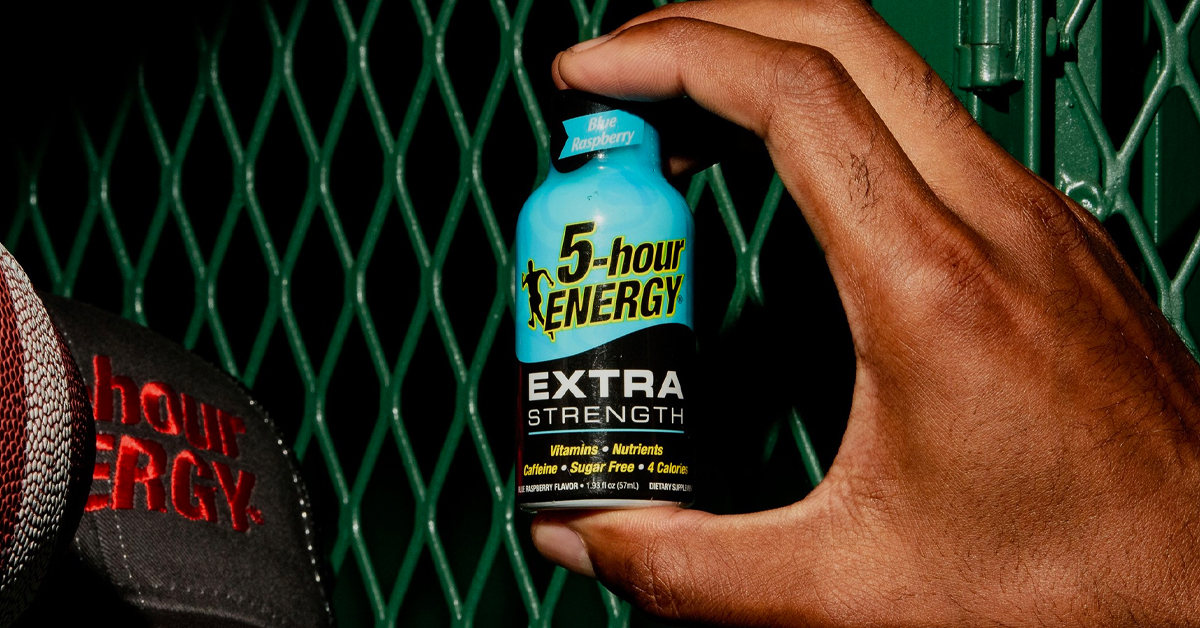After nearly 20 years dominating an energy shot category it largely created, Living Essentials made the bold decision in October 2021 to jump into the $21 billion U.S. energy drink market with a full-sized 16 oz drink, making it the centerpiece of its mission to reinvent the brand as a multi-occasion category player. The “natural progression” into beverages seemed obvious; offer consumers more than one opportunity to grab a 5-Hour product.
But while that business has had its growing pains, the more immediate concerns are coming from shots themselves, the segment that is propping up 5-hour’s business amidst forays into other categories.
Shots Soften
Across energy shots, 5-Hour remains the dominant brand with about 88% of category dollar share. Yet, sales have been softer in the last year. According to Circana data of the last 52-week period ending August 31, dollar sales were down -3.6%, amounting to a $27 million slide compared to a year ago. The next largest energy shot makers’ dollar sales are mixed with Tweaker (+6%) and Stacker (-2.8%) yet both brands command less than 3% of the category.
The sales dip for 5-Hour has been reflected in Circana data from previous years. Unit sales in the August data were down -7.7% year-over-year, in January 2021 unit sales had slipped to -13.5% versus the previous year and, in August 2020, they had declined 12.6%.
The softness in shots can be explained in part by the lack of innovation, said Edwin Henriquez, Euromonitor International senior research analyst. “The category feels comparatively stale to energy drinks and functional beverages in general.”
Henriquez also points to a growing move into powdered formats, functional beverages and “healthier” fitness-oriented energy drink options.
“When consumers use these products, they are actively adding function to their drinks. So even if it’s energy plus electrolytes plus sugar it feels more rewarding and makes consumers more engaged in their consumption,” Henriquez said.
5-Hour president and CEO Jeff Sigouin said 5-Hour probably “waited too long” to get into powders and has no plans to launch into that category. But, echoing Henriquez’s comments, the energy drink maker does intend to bring more functional innovation to both its shots and its beverages next year. Additionally, the company will be refreshing its packaging in 2024.
The COVID Effect
Energy drink sales grew at an estimated inflation-adjusted CAGR of 8.5% from 2017 to 2022 with total energy drink and energy shot sales increasing an estimated 14% from 2021 to 2022, according to data from Mintel. With the influx in sales came some lessons about how shopping habits were changing in both good and bad ways for 5-Hour’s shot business.
“People learned two things during COVID: One is how to check out their own groceries in a store [and] the other one is how to order online,” Sigouin said.
A bump in 5-Hour’s bulk ecommerce sales on Amazon, Walmart.com and Target.com in formats like 24- and 30-packs has been welcome. But it hasn’t been enough to offset a softening brick-and-mortar set, where the rise of automated self-checkout has hurt sales at the register, one of 5-hour’s traditionally strongest facings.
“When you rely so much on impulse [purchases] and 65% of our business is convenience store impulse, any missed occasion is a loss,” Sigouin said.
Sigouin is confident that even though the brand has “lost some interaction with consumers” at the register, its value proposition and product will allow it to succeed even as retailers are reinventing themselves.
“One of the things is it’s just hard to make shots taste good,” he added. “We’ve got a 20 year history of doing it.”
